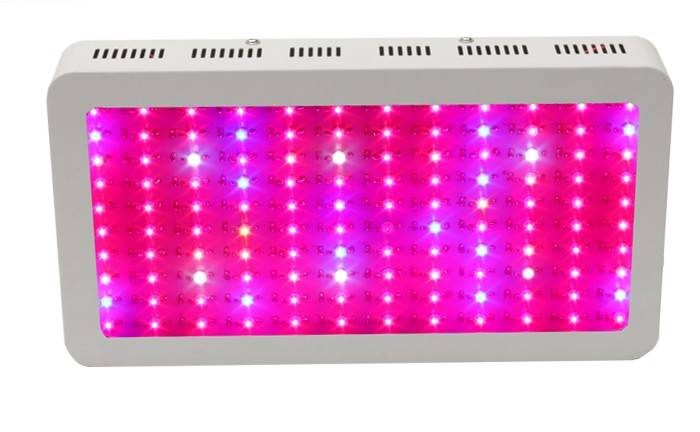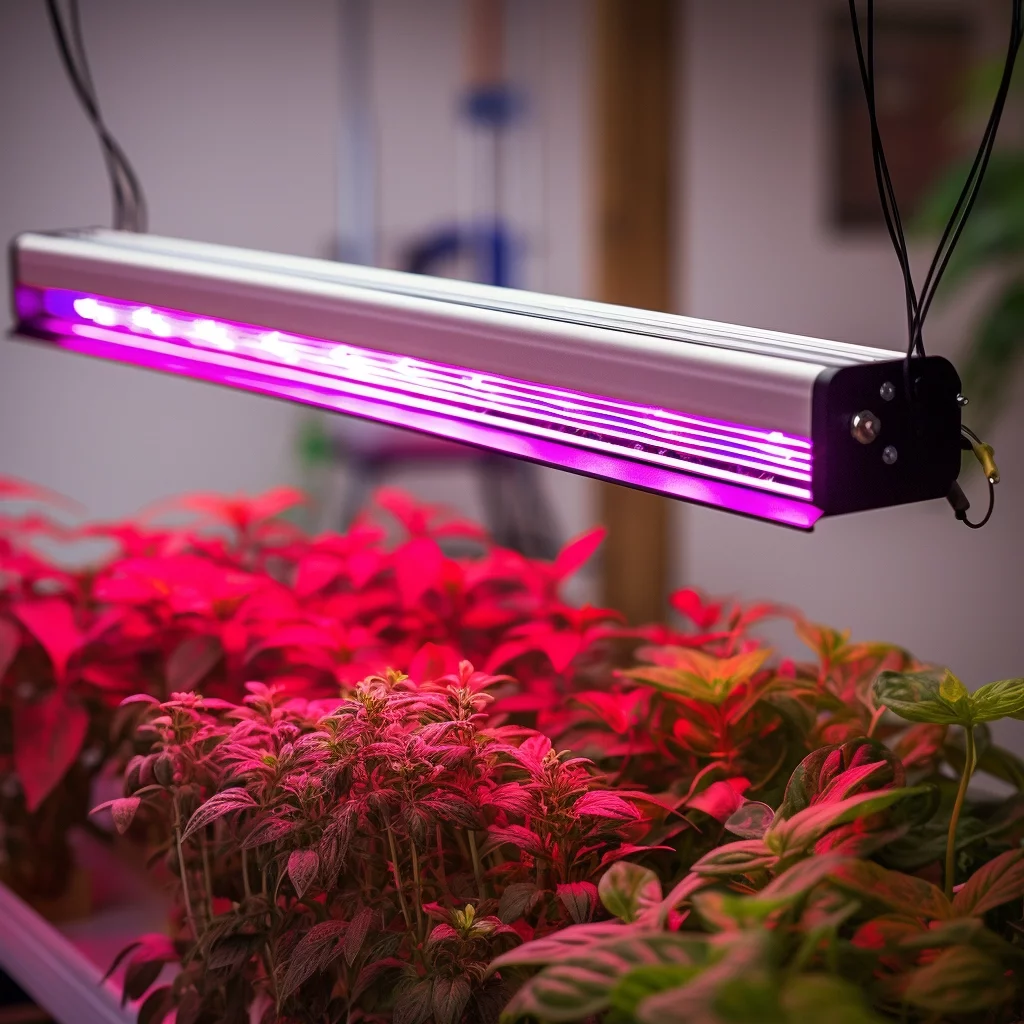Full-spectrum grow lights are essential for indoor gardening. They mimic natural sunlight, helping plants grow well.
Indoor gardeners often struggle with light conditions. Full-spectrum grow lights provide a solution. These lights offer a balanced spectrum of light. They cover all the wavelengths that plants need. This ensures healthy growth and development. Whether you’re growing vegetables, herbs, or flowers, these lights can help.
They improve photosynthesis and boost plant health. Investing in full-spectrum grow lights can make a big difference in your gardening success. They are a great tool for any indoor gardener. Ready to learn more about how these lights can transform your garden? Let’s dive in and explore the benefits and options available.
Introduction To Full-spectrum Grow Lights
Full-spectrum grow lights are essential for indoor plant growth. These lights mimic natural sunlight. They help plants grow healthy and strong. Indoor gardening has become very popular. Many people use these lights to grow plants indoors.
Choosing the right grow light is important. It affects plant health and yield. Full-spectrum lights are the best choice. They cover all the light wavelengths plants need. Let’s explore what these lights are and their importance.
What Are Full-spectrum Grow Lights?
Full-spectrum grow lights emit light across the entire visible spectrum. This means they provide all the colors of light that plants use. These lights replicate the sun’s natural light. They help plants photosynthesize efficiently. Full-spectrum lights include blue, red, and other wavelengths. Each color helps in different growth stages. Blue light promotes leaf growth. Red light encourages flowering and fruiting.
Importance Of Light For Indoor Plants
Light is vital for plants. It is their main energy source. Indoor plants need proper light to photosynthesize. Photosynthesis helps plants produce food. Without enough light, plants become weak and may die. Full-spectrum lights ensure plants get the right amount of light. They help plants grow strong and healthy. These lights also improve plant yield and quality. Proper lighting makes indoor gardening successful.

Credit: www.waveformlighting.com
Key Features Of Full-spectrum Grow Lights
Full-Spectrum Grow Lights are essential for indoor gardening. They help plants grow well by mimicking natural sunlight. Here are some key features you need to know about these lights.
Light Spectrum Explained
The light spectrum is the range of wavelengths produced by a light source. Full-Spectrum Grow Lights cover the entire spectrum of light, from ultraviolet (UV) to infrared (IR). This range includes blue, red, and green light.
Blue light helps with plant growth and leaf development. Red light aids in flowering and fruit production. Green light is essential for overall plant health.
Full-Spectrum Grow Lights provide the right balance of these lights. This balance ensures plants get all the light they need for each growth stage.
Types Of Full-spectrum Grow Lights
There are different types of Full-Spectrum Grow Lights. Each type has unique features and benefits.
- LED Grow Lights: These are energy-efficient and long-lasting. They produce little heat, reducing the risk of burning plants.
- Fluorescent Grow Lights: These are cost-effective and easy to use. They are ideal for small-scale indoor gardening.
- HID Grow Lights: High-Intensity Discharge (HID) lights are powerful and suitable for large grow spaces. They produce more heat and need proper ventilation.
- CMH Grow Lights: Ceramic Metal Halide (CMH) lights offer a broad spectrum of light. They are efficient and have a long lifespan.
Choosing the right type depends on your garden size and plant needs. Consider factors like energy consumption and heat production.
Benefits For Indoor Plant Growth
Full-Spectrum Grow Lights offer many benefits for indoor plant growth. These lights mimic natural sunlight. They provide the right light spectrum for plants. This helps in their healthy growth and development.
Enhanced Photosynthesis
Full-Spectrum Grow Lights enhance photosynthesis in plants. Photosynthesis is the process by which plants make their food. These lights provide the necessary wavelengths. Plants absorb these wavelengths to produce energy. This results in healthier and faster growth.
Improved Plant Health
Using Full-Spectrum Grow Lights improves overall plant health. They support robust root development. The lights also promote strong stems and leaves. Plants grown under these lights are more resistant to diseases. They also show better flower and fruit production.
| Benefit | Explanation |
|---|---|
| Enhanced Photosynthesis | Provides necessary wavelengths for energy production. |
| Improved Plant Health | Supports strong roots, stems, and leaves. |
- Enhanced Photosynthesis: Necessary wavelengths for energy production.
- Improved Plant Health: Strong roots, stems, and leaves.

Credit: www.youtube.com
Choosing The Right Grow Light
Choosing the right grow light for your plants can be challenging. The type of light you select affects your plants’ growth and health. Understanding your plants’ needs will help you make an informed decision.
Considerations For Different Plants
Different plants have unique light requirements. For instance, leafy greens need less intense light. Flowers and fruiting plants require more intense light. Research the specific needs of your plants. This ensures they receive the right amount of light for optimal growth.
Wattage And Coverage Area
Wattage indicates the power the grow light consumes. Higher wattage usually means more light output. However, it also means more electricity use. Determine the right wattage for your plants’ space. This helps balance energy use and light needs.
Coverage area is equally important. It refers to the area the light can effectively cover. Ensure your grow light covers the entire plant area. This prevents any plants from being underlit and promotes even growth.
Installation And Setup Tips
Setting up full-spectrum grow lights correctly is crucial for plant growth. Proper installation ensures your plants receive the right amount of light. This section covers essential tips for placement and adjusting light intensity.
Optimal Placement
Place the grow lights directly above the plants. This mimics natural sunlight. Ensure there is about 12-18 inches of space between the lights and the plant canopy. This helps prevent light burn.
Use a tape measure to maintain consistency. If using multiple lights, space them evenly. This prevents shadows and ensures all plants get equal light.
Consider using adjustable light hangers. These allow you to raise or lower the lights as your plants grow. A consistent light source is key for healthy plant development.
Adjusting Light Intensity
Light intensity is vital for plant health. Most full-spectrum grow lights come with adjustable settings. Start with a lower intensity for seedlings. Gradually increase as the plants mature.
Use a light meter to measure the intensity. Aim for 200-400 PPFD (Photosynthetic Photon Flux Density) for seedlings. Increase to 400-600 PPFD for vegetative growth. For flowering, 600-900 PPFD is ideal.
Monitor your plants regularly. Signs of too much light include yellowing leaves and burnt tips. Too little light results in leggy growth. Adjust the intensity based on plant response.
Consider using a timer. This helps simulate natural light cycles. Most plants need 12-16 hours of light per day. Consistency is key for optimal growth.

Credit: 36vine.com
Maintenance And Care
Maintaining full-spectrum grow lights keeps your indoor garden thriving. Proper care ensures longevity and optimal performance. Let’s explore some essential maintenance tips.
Cleaning And Replacing Bulbs
Dust and dirt can reduce light efficiency. Clean the bulbs with a soft, dry cloth. Avoid using water. Water can damage the electrical components. Check the manufacturer’s guidelines for cleaning.
Bulbs degrade over time. Replace them as recommended. Old bulbs emit less light. This impacts plant growth. Mark your calendar for bulb replacements.
Ensuring Proper Ventilation
Ventilation is crucial. It prevents overheating. Overheating can damage the lights. Ensure air circulates around the lights. Use fans if necessary. Fans help to keep the temperature down.
Check vents and filters regularly. Clean them to avoid blockages. Blockages reduce airflow. This can lead to overheating. Proper ventilation extends the lifespan of your grow lights.
Common Mistakes To Avoid
Using full-spectrum grow lights can benefit your plants greatly. Yet, many growers make common mistakes. These errors can harm plant health. Here are some key mistakes to avoid.
Overexposure To Light
Overexposure to light can stress your plants. Plants need light, but too much can be harmful. Overexposure can lead to burned leaves and stunted growth.
- Keep lights at a safe distance.
- Monitor plant response regularly.
- Use timers to control light duration.
Adjust light intensity based on plant type. Each plant has unique light needs.
Ignoring Light Cycles
Plants have natural light cycles. Ignoring these cycles can disrupt plant growth. Plants need periods of light and darkness.
| Plant Type | Light Cycle |
|---|---|
| Vegetables | 16 hours light / 8 hours dark |
| Flowering Plants | 12 hours light / 12 hours dark |
Use timers to mimic natural light cycles. This will help your plants thrive.
Future Trends In Grow Light Technology
The world of grow light technology is rapidly evolving. Future trends in this field promise to enhance plant growth and cultivation efficiency. From advanced LEDs to smart home integration, the possibilities are endless.
Advancements In Led Technology
LED technology has come a long way in recent years. Modern LED grow lights are more energy-efficient and provide better light spectra for plants.
- Enhanced spectral range for optimal plant growth
- Improved energy efficiency, reducing electricity costs
- Longer lifespan, minimizing replacement frequency
These improvements in LED technology mean plants receive the best light for photosynthesis. This results in healthier and more productive growth.
Integration With Smart Home Systems
Smart homes are becoming more common, and grow light technology is following suit. The integration of grow lights with smart home systems offers numerous benefits.
- Automated light scheduling and adjustments
- Remote monitoring and control via smartphones
- Integration with other smart devices for a cohesive system
Imagine controlling your grow lights with a simple voice command. This level of convenience makes managing indoor gardens easier than ever.
Frequently Asked Questions
What Are Full-spectrum Grow Lights?
Full-spectrum grow lights mimic natural sunlight. They emit all wavelengths of light. These lights support plant growth from seed to harvest.
How Do Full-spectrum Grow Lights Work?
Full-spectrum grow lights use LEDs or fluorescent bulbs. They provide light in the blue and red spectrum. This light promotes photosynthesis and healthy plant development.
Are Full-spectrum Grow Lights Energy-efficient?
Yes, full-spectrum grow lights are energy-efficient. They consume less power compared to traditional grow lights. They provide optimal light output with minimal energy consumption.
Can Full-spectrum Grow Lights Be Used Indoors?
Yes, full-spectrum grow lights are perfect for indoor gardening. They provide sufficient light for plants in low natural light conditions. They support growth in any indoor environment.
Conclusion
Full-spectrum grow lights offer many benefits for indoor gardening. They provide balanced light, supporting plant growth. Your plants get the right spectrum they need. This leads to healthier and more vibrant plants. It’s a simple and effective solution for any gardener.
Try full-spectrum grow lights and see the difference they make. Happy gardening!



